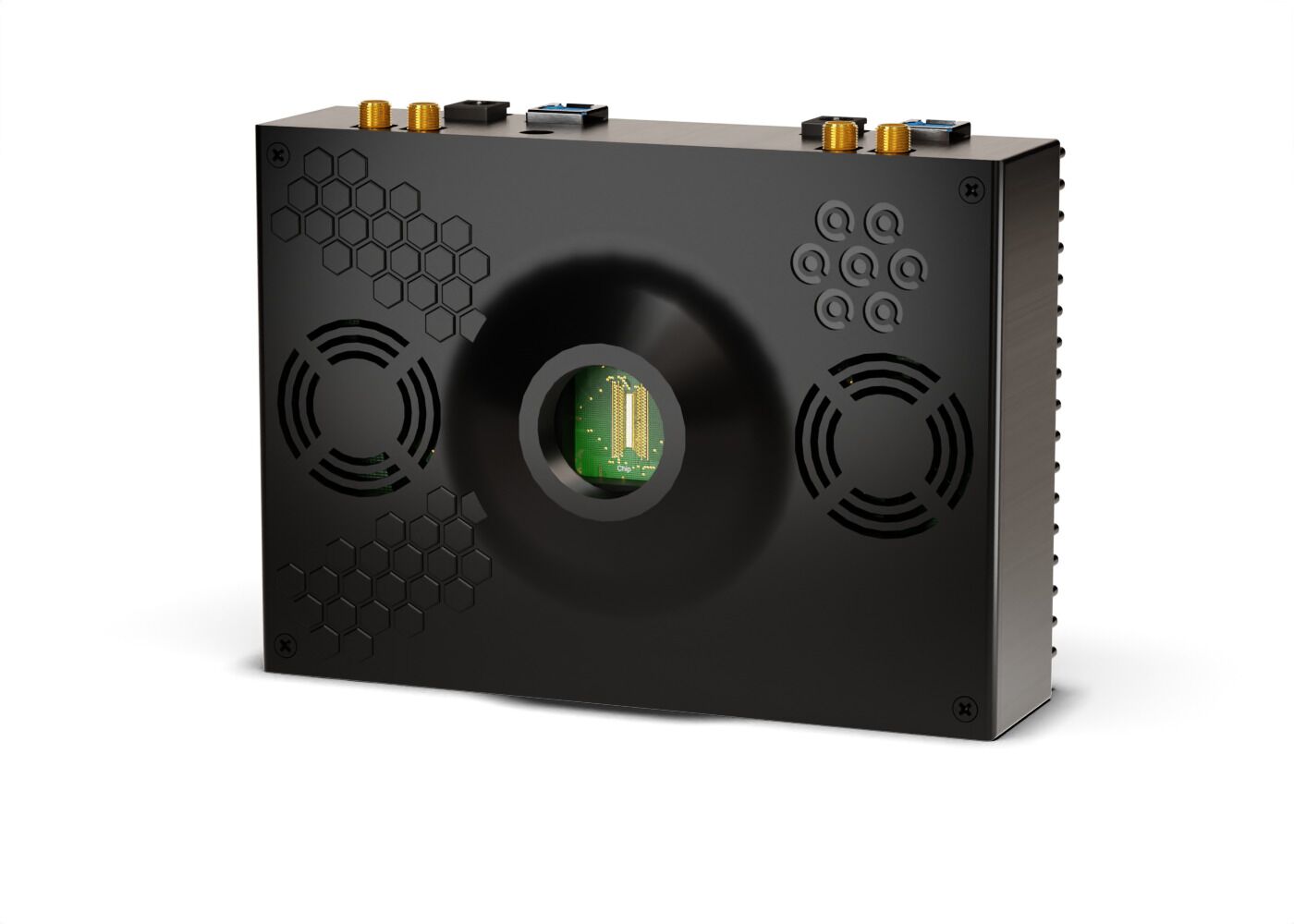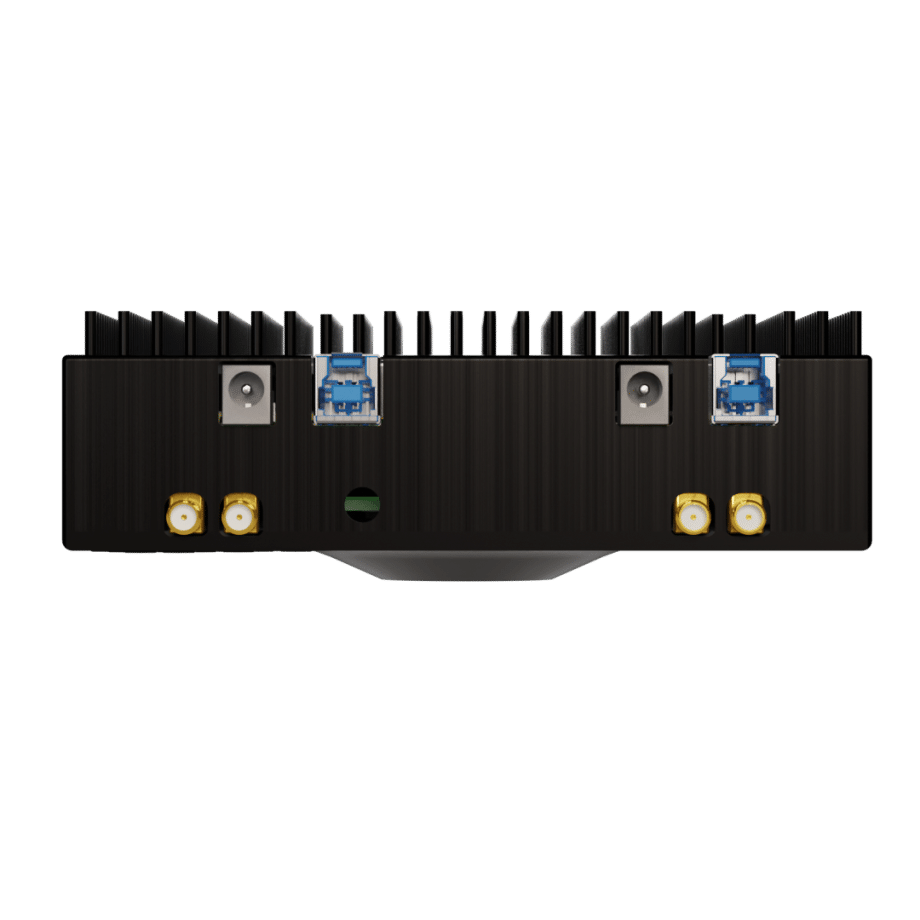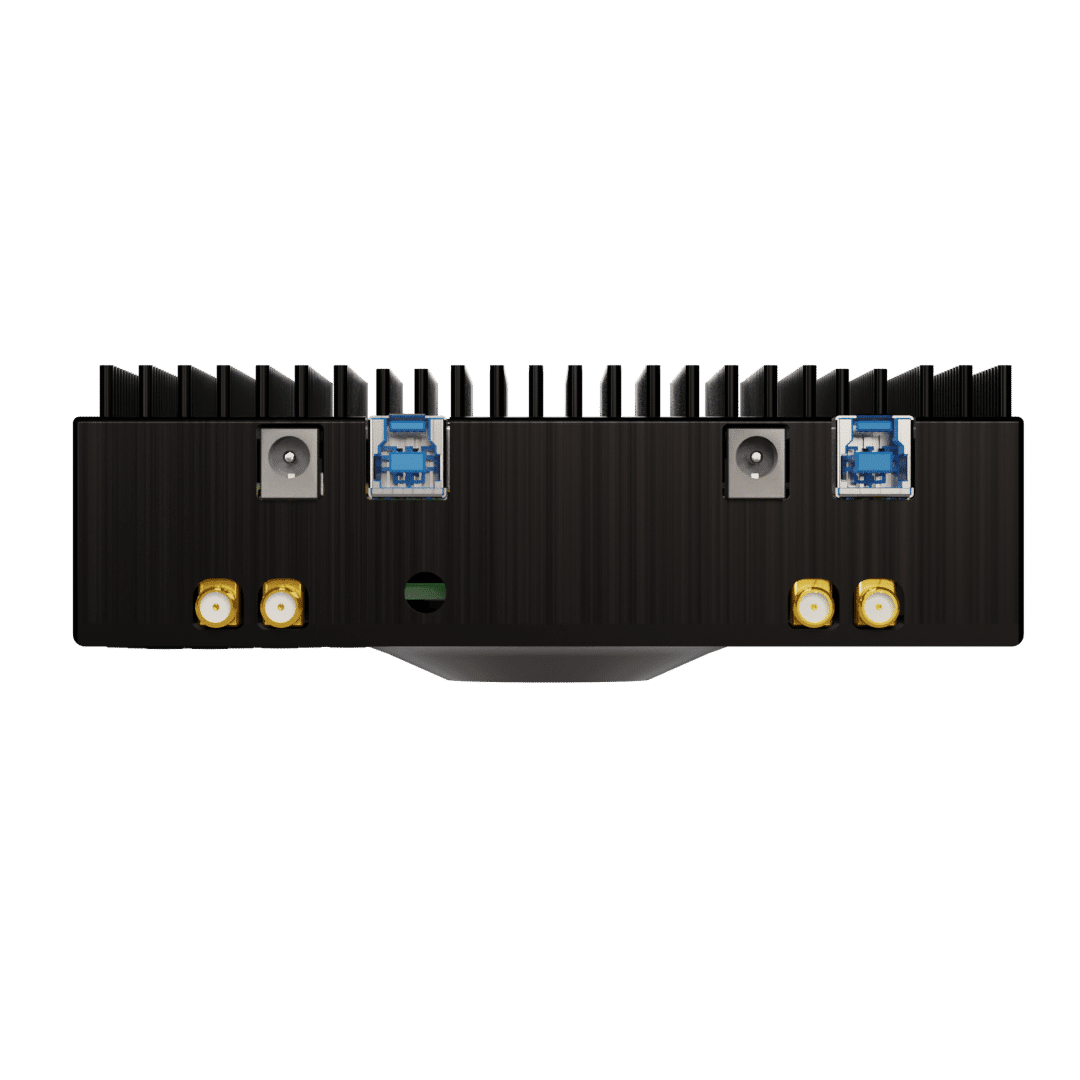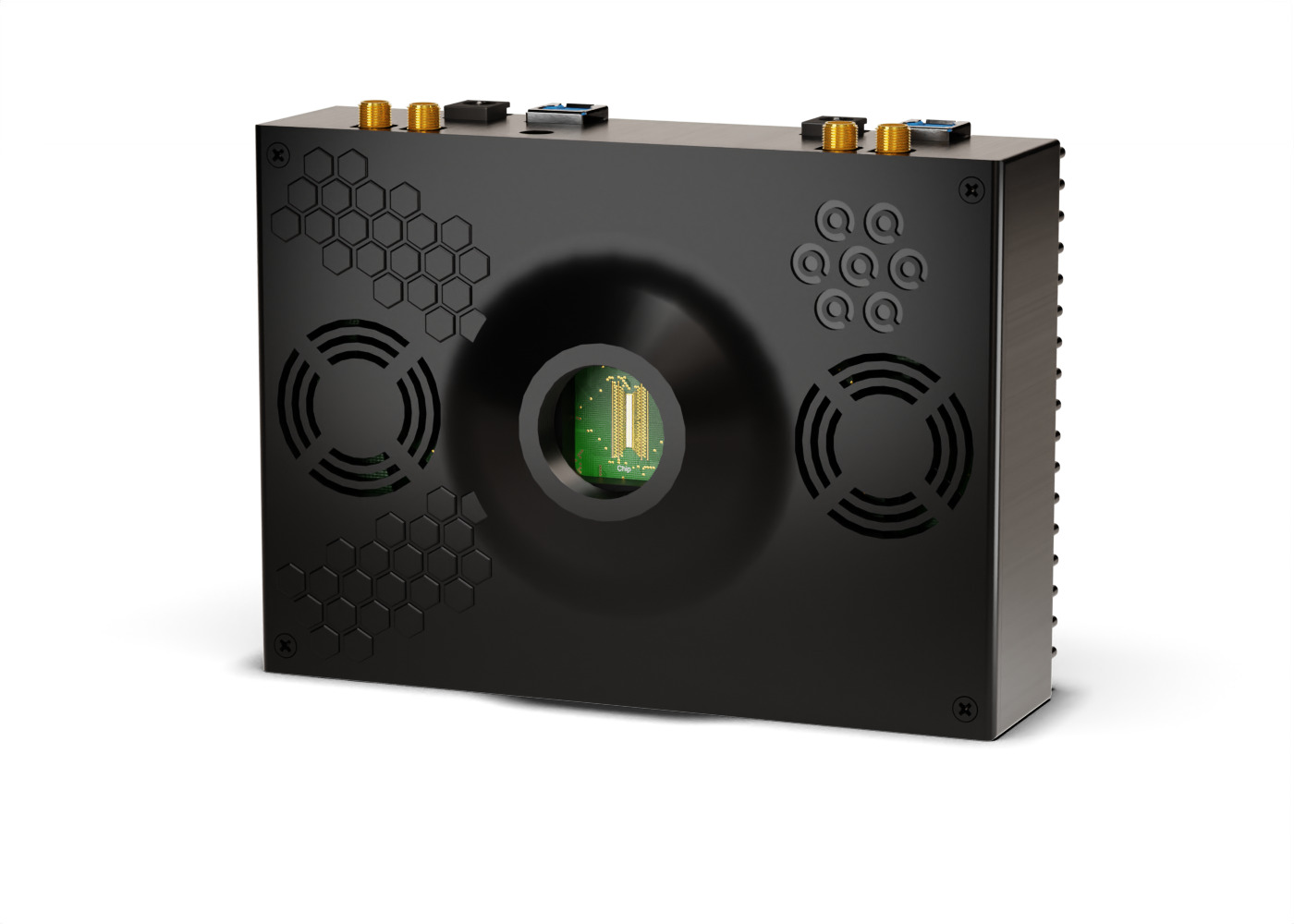SPADλ photon-counting SPAD linear array, in a nutshell
SPADλ is a photon-counting linear array equipped with time gating and time tagging capabilities. The detector’s core is a SPAD array featuring 320×1 pixels. It achieves photon counting at a rate of up to 555,000 frames per second, with zero readout noise. The system incorporates nanosecond time gating accompanied by a 17 ps gate phase shift. Additionally, time tagging is available with a 20 ps resolution and 130 ps FWHM precision.
What is a SPAD or single-photon avalanche diode ?
A single-photon avalanche diode or SPAD is a solid-state photodetector based on a reverse biased semi-conductor p-n junction like photodiodes and avalanche photodiodes (APDs). Unlike regular photodiodes, however, a SPAD operates in a mode called “Geiger mode” where a single incoming photon will create an electron-hole pair which will be amplified enough to create a measurable current. Therefore SPADs are intrinsically able to detect single-photons, with a very high temporal resolution.
The key component of a SPAD is a region within the diode called the depletion region. This region is designed to have a high electric field, which allows it to function as a high-gain avalanche photodiode. When a single photon interacts with the depletion region, it generates an electron-hole pair. The high electric field across the depletion region causes the electron and hole to accelerate, leading to a process known as impact ionization in which each electron or hole can gain enough energy to generate another electron-hole pair, resulting in an avalanche effect. This avalanche process rapidly amplifies the initial signal, converting the weak optical signal from the single photon into a detectable electrical pulse.
SPADs can be compared to other single-photon detection technologies such as PMTs and APDs, but SPADs have several advantages over those two type of detectors.
Compared to photomultiplier tubes (PMTs), SPADs:
- have higher sensitivity over a wider spectral range
- have better time resolution
- are less bulky so more suitable for assembling into large arrays
- are less sensitive to electromagnetic or mechanical perturbations.
Compared to avalanche photodiodes (APDs), SPADs:
- have higher detection efficiency
- have smaller active areas
- generate less dark counts.
What is a SPAD linear array ?
A SPAD array refers to an arrangement of multiple single-photon avalanche diodes (SPADs) that are integrated into a one-dimensional array format. Each SPAD within the array operates independently and is capable of detecting individual photons. The SPAD array combines the sensitivity and photon-counting capabilities of SPADs with the ability to detect photons across a larger spatial area.
Each SPAD in the array is assigned a unique address, allowing individual SPADs to be accessed and controlled independently. This addressing scheme enables selective readout of specific SPADs or groups of SPADs within the array, providing flexibility in data acquisition and analysis.
The main advantage of using a SPADλ linear array is the ability to perform spatially resolved photon detection. By detecting photons across multiple locations simultaneously, it allows for the capture of detailed spatial information about the incoming light. A linear SPAD array is particularly useful in applications such as flow cytometry, where samples are moving and being scanned by the linear array.
To view other SPAD cameras that Axiom Optics offers, click HERE.
SPADλ Linear Array Applications
Confocal microscopy
SPAD arrays increase light collection and enable innovation in the field of laser-scanning confocal microscopy. This innovation finally leads to a sharper and brighter image with functional information about the underlying molecular function, interactions and environment. SPAD arrays provide the following advantages in confocal microscopy:
- Achieve super-resolution with a standard confocal microscope ;
- Increase light collection ;
- Increase imaging speed ;
- Reduce background noise.
Quantum information
Temporal photon correlations and photon number resolving (PNR) are fundamental to probing the quantum properties of light. SPADλ arrays have an extremely low crosstalk and thus enable reliable measurements of second and third order photon correlations, as well as quantum random number generation for unbreakable encryption. SPAD arrays provide the following advantages in quantum information:
- Simplify setup with single-chip multi-channel detector ;
- Increase data rate with detector parallelization ;
- Photon number resolving (PNR) detection.
Flow cytometry
SPADλ enables 320 spectral channels with shot noise limited SNR and integration times down to 1.8 µs. SPAD linear arrays provide the following advantages in flow cytometry:
- Simplify multichannel detection ;
- Improve signal to noise ratio.
Fluorescence lifetime imaging microscopy (FLIM)
SPAD cameras increase the overall photon throughput compared to scanned detection systems from the typical 10 Mcounts per second to 26 Gcounts per second. SPAD cameras provide the following advantages in FLIM:
- Simplify FLIM setup ;
- Increase FLIM frame rate.
High-speed imaging
SPAD cameras enable high frame rates with global shutter at zero readout noise. SPAD cameras provide the following advantages in high-speed imaging:
- Image fast phenomena in low light conditions ;
- Image light-in-flight.
SPAD Publications
Publications with Swiss SPAD3:
- NIR fluorescence lifetime macroscopic imaging with a novel time-gated SPAD camera. Xavier Michalet, Arin C. Ulku, Michael A. Wayne, Shimon Weiss, Claudio Bruschini & Edoardo Charbon. SPIE. April 2023.
Publications with SwissSPAD2:
- In vitro and in vivo NIR fluorescence lifetime imaging with a time-gated SPAD camera. Jason T. Smith, Alena Rudkouskaya, Shan Gao, Juhi M. Gupta, Arin Ulku, Claudio Bruschini, Edoardo Charbon, Shimon Weiss, Margarida Barroso, Xavier Intes, & Xavier Michalet. Optica. May 2022.
- Light detection and ranging with entangled photons. Jiuxuan Zhao, Ashley Lyons, Arin Can Ulku, Hugo Defienne, Daniele Faccio & Edoardo Charbon. Optics Express. January 2022.
- Full-field quantum imaging with a single-photon avalanche diode camera. Hugo Defienne, Jiuxuan Zhao, Edoardo Charbon & Daniele Faccio. Physical Review A. April 2021.
- Wide-field time-gated SPAD image for phasor-based FLIM applications. Arin Ulku, Andrei Ardelean, Michel Antolovic, Shimon Weiss, Edoardo Charbon, Claudio Bruschini & Xavier Michalet. IOP Science. February 2020.
- A 512×512 SPAD image sensor with integrated gating for widefield FLIM. Arin Can Ulku, Claudio Bruschini, Ivan Michel Antolović, Yung Kuo, Rinat Ankri, Shimon Weiss, Xavier Michalet & Edoardo Charbon. IEEE Journal of Selected Topics in Quantum Electronics. August 2018.
Publications with SwissSPAD:
- SPAD imagers for super resolution localization microscopy enable analysis of fast fluorophore blinking. Ivan Michel Antolovic, Samuel Burri, Claudio Bruschini, Ron A. Hoebe & Edoardo Charbon. Nature Scientific Reports. March 2017.
Other publications about SPAD technology:
- Megapixel time-gated SPAD image sensor for 2D and 3D imaging applications. Kazuhiro Morimoto, Andrei Ardelean, Ming-Lo Wu, Arin Can Ulku, Ivan Michel Antolovic, Claudio Bruschini & Edoardo Charbon. Optica. April 2020.
- Single-photon avalanche diode imagers in biophotonics: review and outlook. Claudio Bruschini, Harald Homulle, Ivan Michel Antolovic, Samuel Burri & Edoardo Charbon. Nature. September 2019.
Downloads
Go to https://www.piimaging.com/docs/ to download the latest software versions for both Windows and Linux. Both software versions should run standalone and feature the same functionalities. The Windows version has been tested on Windows 10 and 11. The Linux version is tested on Ubuntu 20.04 and 22.04.




